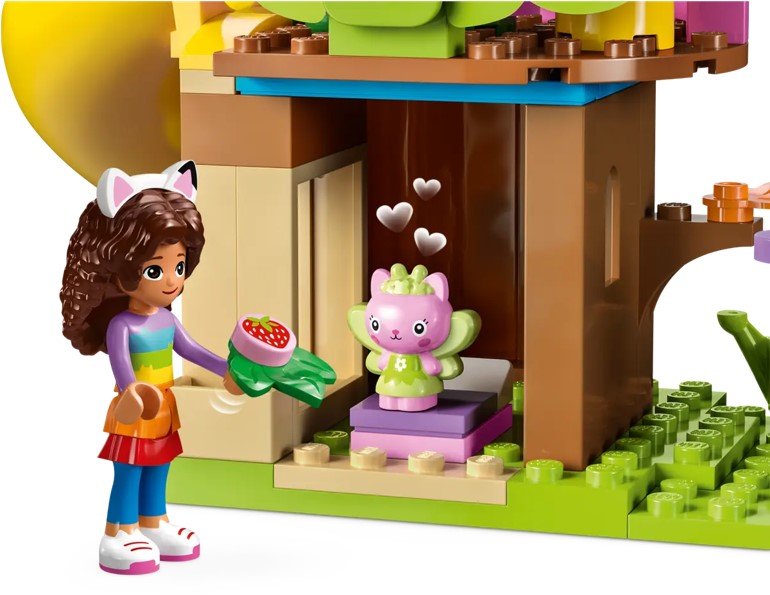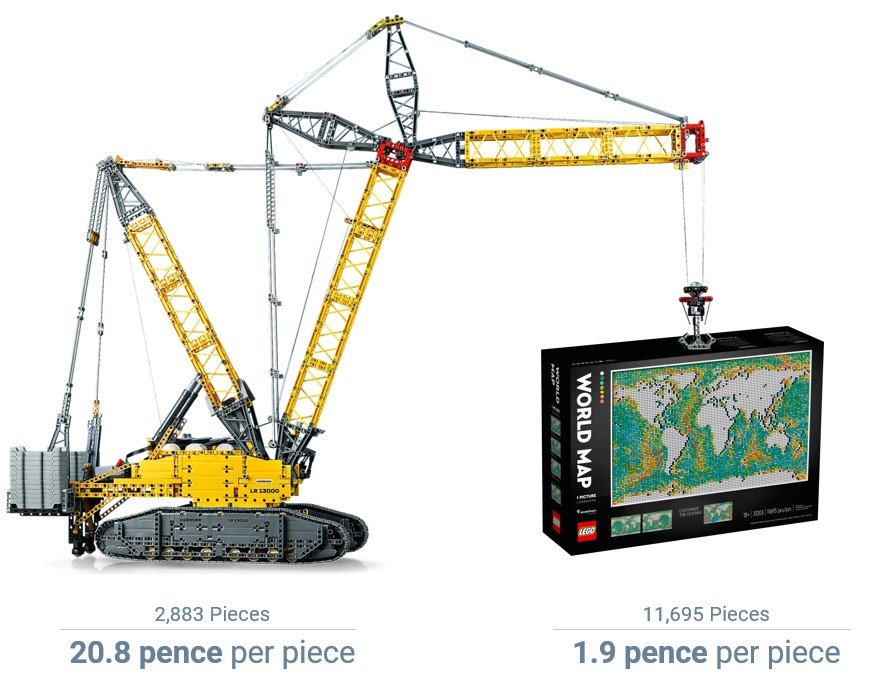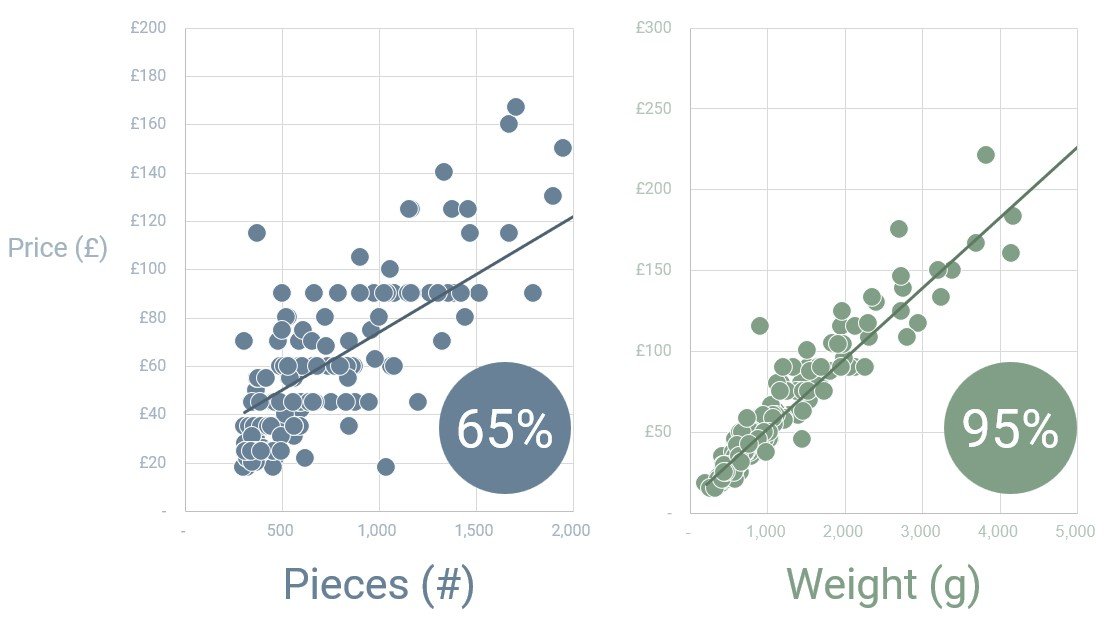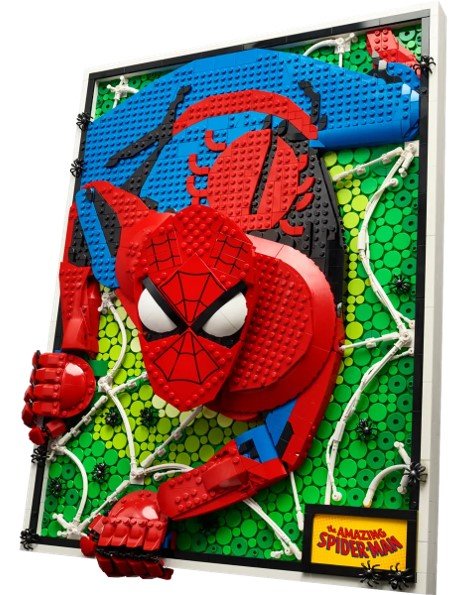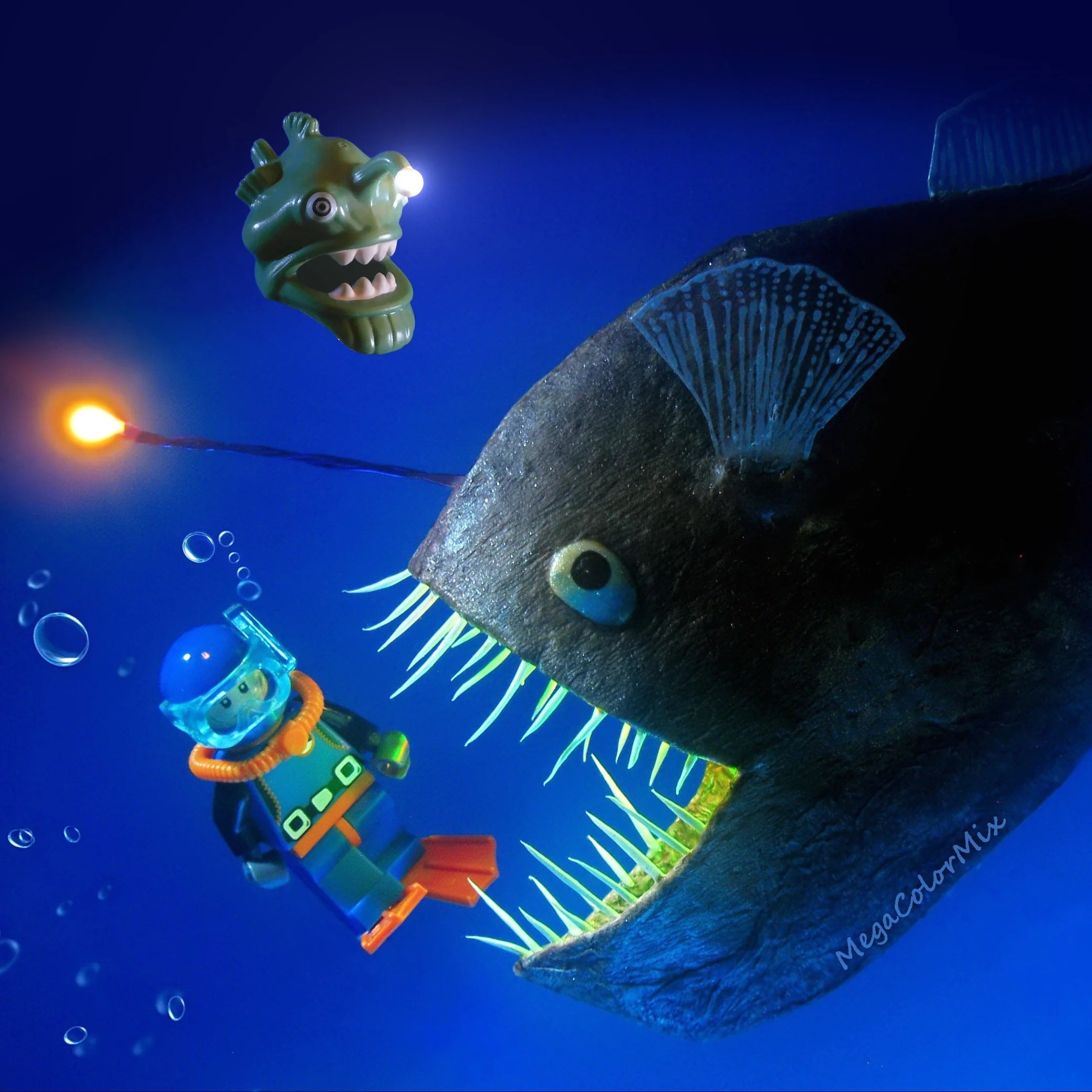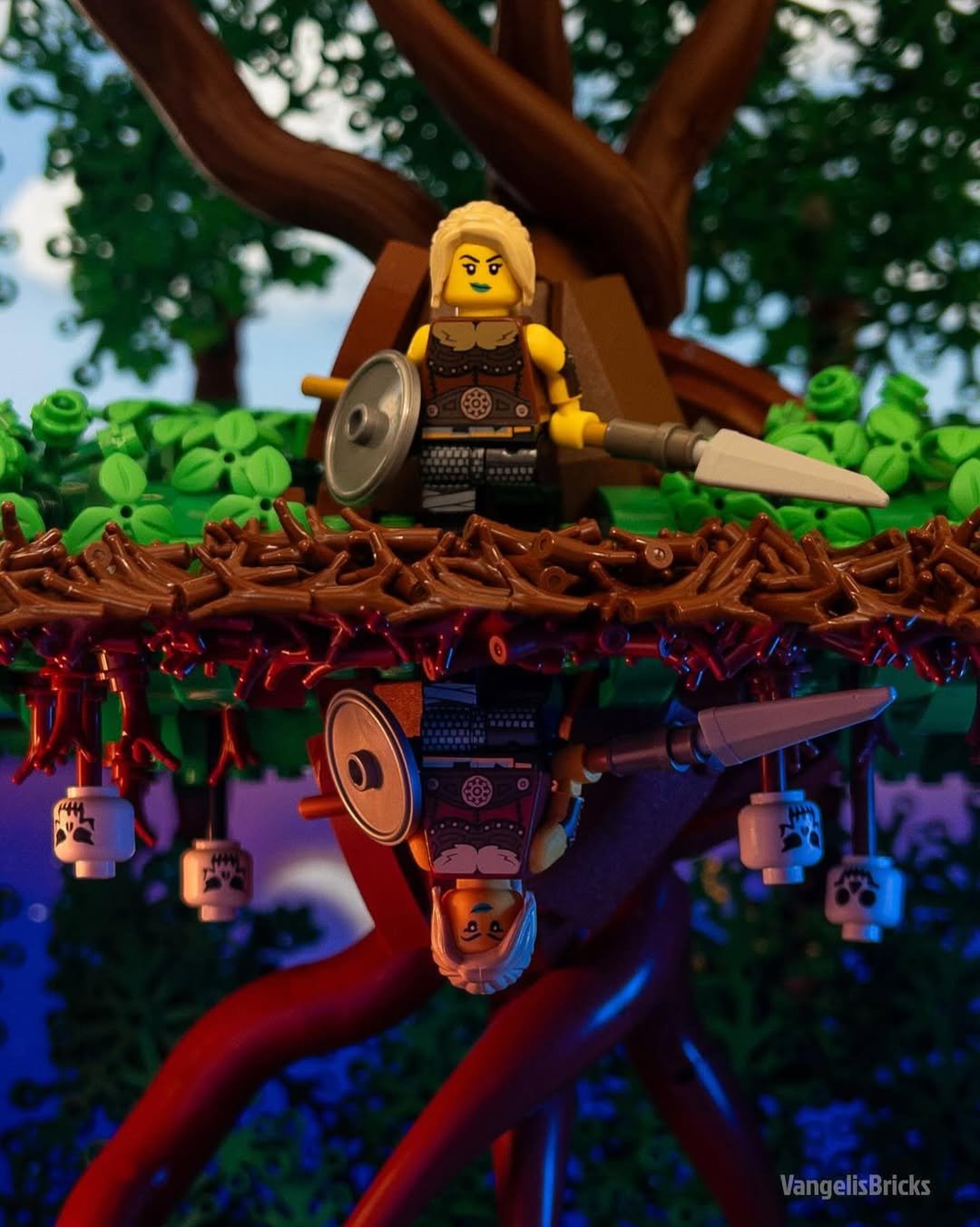The LEGO IP Tax: How Much Extra Do Licensed Sets Cost?
/Since the release of Star Wars: The Phantom Menace in 1999, The LEGO Group has produced many sets using the Intellectual Property (IP) of other companies. Harry Potter followed Star Wars in 2001, and over the next two decades, there was a surge of new licenses making it the most important factor in The LEGO Group’s stunning growth.
In turn, LEGO fans have benefited from the expanded range which offers a broader array of themes, sets, and minifigures. This has provided expanded play options for kids and a resounding hit of nostalgia for adults.
Images © The LEGO Group. Gabby’s Dollhouse 10787 Kitty Fairy's Garden Party
But of course, all of this comes at a cost. Using the IP of other another organisation incurs a fee, and a portion of that fee must be passed onto the customer to make the product viable. Still, the increased prices can cause some contention among LEGO fans, especially when they compare the physical inventory of a licensed product to its unlicensed cousin.
Today, I will attempt to remove some of the mysteries about the “LEGO IP tax,” estimate the price uplift for licensed sets, and touch on how best to assess the value for the retail price of a LEGO set.
Piece Count Complications
In 2021, The LEGO Group released 183 sets containing more than 300 pieces (excluding Technic… more on that later). These sets cost a total of £13,700 / $19,000 / €16,000, and if you were fortunate enough to obtain them all, you would be adding 250,000 pieces to your collection weighing a quarter of a tonne, with over 900 new minifigures and enough sticker sheets to wallpaper a small room!
Speaking of tonnes, I will be using weight to compare licensed and unlicensed sets. As many have observed, piece count has become less useful in recent years as both pieces and sets have become more diverse. The two extremes can be seen in sets like 31203 World Map and 42146 Liebherr Crawler which come in at 1.9 and 20.8 pence per piece. Though factually correct, this comparison gives us no clue about which one is “the bargain.”
The Extremes of “Price per Piece”
Images © The LEGO Group.
Weight Is 95% Predictive
As I researched prices, I found weight is highly correlated to a set’s price. In our article about large sets, we determined that only 65% of a set's value can be attributed to the number of pieces. This results in a broad range of outcomes and is too imprecise to use effectively.
But a set’s weight is a much stronger predictor of price with a 92% correlation, rising to a highly accurate 95% if you include the set’s licensing status. (Part of the remaining 5% is due to electronic parts such as motors or battery packs—so for simplicity, Technic sets have been excluded).
Price Correlation - 183 Set Sample (2021)
Sample: 183 sets from 2021 with more than 300 pieces (excluding Technic)
Because of this predictive accuracy, we can confidently use weight to go on and compare licensed and unlicensed sets on a cost per gram basis.
The IP Tax Revealed (Some Caveats Applied)
Although piece counts for LEGO sets are widely available, weight information is somewhat scarce. Somewhere in an alternative universe, there is an uber-rich version of me with the wealth to acquire vast estates, boats bigger than HMS Bezos, and of course every LEGO set ever released. This “hypothetical being” would be able to weigh all his sets and have confidence in the accuracy of the data, but alas, it was not to be, and in this universe, I’m stuck with BrickLink data.
Now back to our 183 set sample from 2021. Using the BrickLink weight data and analysing the correlations, I discovered that licensed sets were 20.0% more expensive than unlicensed sets on a literal “pound for pound” basis. Obtaining parts from licensed sets would cost 5.92p per gram while acquiring them from unlicensed sets would just cost 4.94 per gram.
Sample: 183 sets from 2021 with more than 300 pieces (excluding Technic)
Other Factors
Now, I’d like to stress that I am in no way proposing that The LEGO Group’s royalty payments are 20%. Rather, the price we pay for licensed sets is 20% higher than unlicensed sets from our sample. It doesn’t consider other factors that could also cause a difference between the two, including production costs (e.g. new moulds for many minifigures), design costs, and the additional costs of working with the franchise holder.
That said, it is still an excellent metric for us to use to determine if you are “getting your money’s worth.” By removing the 20% markup (you can divide the retail price by 1.2), you are generating a price that can be fairly compared to similar unlicensed sets.
Images © The LEGO Group. 76417 Gringotts Wizarding Bank
Examples of Fair Comparative Prices for Licensed Sets
So what would licensed sets cost if we didn’t have to pay the IP tax? I’ve adjusted the prices for some licensed sets below, removing the 20% uplift from the retail price as noted above. Tantalisingly, it is also the price we’d likely pay if The LEGO Group owned the IP, like it does for Ninjago!
The Value of Intellectual Property
The last point is actually quite interesting and leads to the following thought experiment: What would happen if Lucasfilm and LEGO were the same company? Would it mean all Star Wars products now become the equivalent of Ninjago and sell at an unlicensed price? Or would the prestige of the Star Wars IP make it possible to maintain the current markup?
It starts to get very interesting when considering the current relationship between Lucasfilm and The LEGO Group. When the partnership began in 1999, The Star Wars franchise was at the height of its power with its upcoming “Phantom Menace” release, while The LEGO Group was experiencing one of the most challenging periods in its history.
Image © The LEGO Group. LEGO Star Wars Set 7101 Lightsaber Duel
Fast-forward 24 years, and the situations have somewhat reversed. LEGO is undergoing a period of world domination, while it could be argued (and I think I will) that Disney Star Wars is facing some “creative challenges.” Perhaps the best evidence for this finding is the lack of Sequel Trilogy sets being released since Episode IX wrapped up; money talks, and the money isn’t flowing that way… and I’m sure that wasn’t part of Disney or Lucasfilm’s plan back in 2015.
Image sourced from Envato Elements
Does that mean The LEGO Group should be paying less for the Star Wars license? Not based on that observation alone, but the change in the companies’ respective positions may alter each party’s ability to generate revenue for the other. And I can back this up with a very robust statistical sample of one… a 4-year-old child.
For them, LEGO came first, then LEGO Star Wars followed, and Star Wars followed after that. In short, LEGO created what will probably become a lifetime Star Wars fan. What’s that worth to Lucasfilm? This relationship can go the other way too and both organisations are stronger for their partnership, but it is perhaps not as straightforward as it might initially appear.
This is all moot, and clearly the ramblings of some buffoon desperately creating paper-thin arguments to get LEGO Star Wars sets cheaper…but still, I think it is a little interesting nonetheless.
Prices by Theme
Back to our data sample, I have broken down the results by theme. Although statistically we have less confidence in their accuracy, they are still interesting to quickly look over while at the same time taking some small sample sizes into account. (Thankfully, some fan sites like Brick Architect include price per gram in their reviews.)
Price per Gram (pence) by Theme
Sample: 183 sets from 2021 with more than 300 pieces (excluding Technic)
Cost Conclusion
Images © The LEGO Group. 31209 The Amazing Spiderman
I don’t think anyone would be surprised that the price difference between licensed and unlicensed sets was around 20%. That feels about right based on my own gut feel.
It’s also not surprising that the gargantuan Marvel and Star Wars franchises initially appear to be the most expensive themes, but because of their stature, they may also include additional design and production costs which would inflate the price difference.
In an ideal world, time would have permitted collecting a larger sample, perhaps over five years rather than one. That would have allowed us to treat the theme-by-theme comparison with much more confidence, but obtaining accurate weight data quickly isn’t an easy task.
But I think the big takeaway for me is that when buying a licensed set, remember to mentally remove 20% from the price (divide by 1.2); that’s a fairer way to judge its value on a ‘LEGO’ basis. If it still looks pricey? Well, at least there’s a version of you in an alternative universe buying ten copies just for the hell of it!
Best of BrickNerd - Article originally published August 29, 2023.
Do you pay the LEGO IP tax? Let us know in the comments below!
Do you want to help BrickNerd continue publishing articles like this one? Become a top patron like Charlie Stephens, Marc & Liz Puleo, Paige Mueller, Rob Klingberg from Brickstuff, John & Joshua Hanlon from Beyond the Brick, Megan Lum, Andy Price, Lukas Kurth from StoneWars, Wayne Tyler, Monica Innis, Dan Church, and Roxanne Baxter to show your support, get early access, exclusive swag and more.

